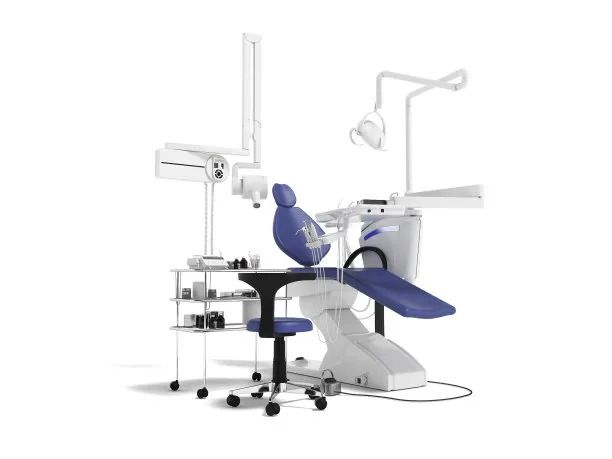Comprehensive Guide to Dental Implant Treatment Enhancing Smiles and Restoring Confidence for Patients of All Ages
Summary: Dental implant treatment offers a transformative solution for individuals struggling with missing teeth. This comprehensive guide outlines the various aspects of the procedure, emphasizing its ability to enhance smiles and restore confidence for patients across all age groups. We will explore the fundamentals of dental implants, assess candidacy and preparation, detail the implantation process, and examine post-operative care and maintenance. Each section aims to provide a thorough understanding of the treatment, ensuring that patients can make informed decisions about their dental health. By the end of this article, readers will appreciate the profound impact that dental implants can have on one’s overall quality of life.
1. Understanding Dental Implants and Their Benefits

Dental implants are titanium posts surgically placed into the jawbone to serve as robust foundations for replacement teeth. Unlike conventional dentures, implants securely bond with the bone, offering a permanent solution to tooth loss. This integration not only provides stability but also restores the natural appearance and functionality of teeth, allowing individuals to chew and speak without difficulty.
One of the key benefits of dental implants is their ability to preserve jawbone health. When a tooth is lost, the jawbone can start to deteriorate. Implants help stimulate the bone, preventing further loss and maintaining facial structure. This practical benefit contributes to long-term oral health and aesthetics, ensuring that patients do not face premature aging due to missing teeth.
Moreover, dental implants can significantly enhance a person’s self-esteem. With a natural-looking smile restored, patients often experience an increase in confidence. They are more likely to engage socially and participate in activities without fear of embarrassment, leading to an improved quality of life overall.
2. Candidacy and Preparation for Dental Implant Treatment
Determining candidacy for dental implants involves a comprehensive evaluation by a qualified dental professional. Ideal candidates usually possess good oral health, including healthy gums and sufficient jawbone density to support the implant. Individuals suffering from chronic illnesses or who smoke may require additional assessments and preparatory treatments to ensure successful outcomes.
Preparation for dental implants usually includes diagnostic imaging, such as X-rays or 3D CT scans, which provide detailed views of the jaw and surrounding structures. These assessments help in developing a tailored treatment plan and determining the optimal placement of the implant. Additionally, discussing medical history and lifestyle habits with the dental team is crucial in identifying any potential risks.
In some cases, patients may need preliminary procedures such as bone grafting to enhance the jawbones volume. This additional step, although prolonging the treatment timeline, is essential for ensuring a strong foundation for the implant. Thorough preparation sets the stage for optimal results and a smooth healing process.
3. The Dental Implant Procedure Explained
The dental implant procedure typically occurs in several stages. Initially, a surgical team will place the titanium post within the jawbone under local anesthesia. This surgical process usually takes 1-2 hours, and patients may experience minimal discomfort. Following the placement, a healing period of several months is necessary for the implant to integrate fully with the bone.
Once the healing is complete, the dentist will attach an abutment, which serves as a connector between the implant post and the prosthetic tooth. The final step involves crafting a custom-made crown to match the patient’s natural teeth. The entire process, from placement to crown attachment, can take several months, but the end result is often worth the wait.
Communication with the dental team during this phase is vital. Patients are encouraged to express any concerns and clarify post-operative expectations. With proper guidance and care throughout the treatment, individuals can attain a comfortable and effective solution for their dental needs.
4. Post-Operative Care and Maintenance
Post-operative care is crucial for the long-term success of dental implants. Following the procedure, patients should adhere to the dentist’s instructions regarding diet, oral hygiene, and activity restrictions. Maintaining cleanliness around the implant site helps prevent infections and complications, leading to optimal healing.
Regular dental check-ups are essential for monitoring the health of the implants and surrounding gums. During these visits, professionals can identify potential issues early on and offer solutions to mitigate any risks. It is advisable for patients to maintain an at-home oral care routine, including brushing and flossing, to preserve their overall dental health.
As with any dental work, lifestyle choices play a significant role in the longevity of implants. Avoiding smoking and maintaining a balanced diet can greatly contribute to both the healing process and the enduring health of the implants. Patients can achieve successful outcomes and enjoy their restored smiles by following these protocols diligently.
Summary:
In conclusion, dental implant treatment is a comprehensive solution for enhancing smiles and restoring confidence, catering to patients of all ages. From understanding the implants and determining candidacy to detailing the procedure and emphasizing post-operative care, each aspect contributes to a successful outcome. The blend of aesthetic benefits and functional durability makes dental implants a favored choice for individuals looking to improve their oral health.
This article is compiled by Vickong Dental and the content is for reference only.



